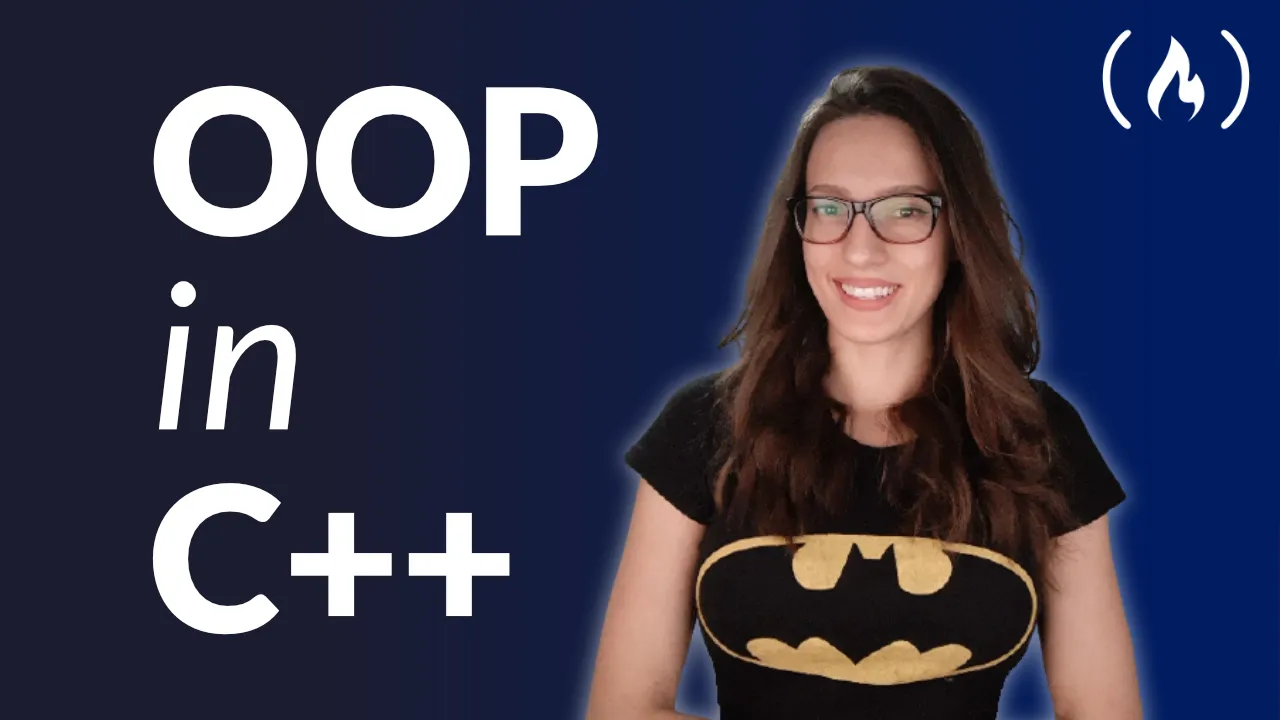
C++ Standard Library: Associative Containers 
This course provides an in-depth look at the associative containers available in the C++ Standard Library, such as std::map. Participants will learn the advantages and disadvantages of each container, as well as how to perform common operations. Slides and demo code are used to demonstrate the concepts. ▼
ADVERTISEMENT
Course Feature
![]() Cost:
Cost:
Free Trial
![]() Provider:
Provider:
Pluralsight
![]() Certificate:
Certificate:
Paid Certification
![]() Language:
Language:
English
![]() Start Date:
Start Date:
On-Demand
Course Overview
❗The content presented here is sourced directly from Pluralsight platform. For comprehensive course details, including enrollment information, simply click on the 'Go to class' link on our website.
Updated in [February 21st, 2023]
What does this course tell?
(Please note that the following overview content is from the original platform)
This course will teach you in a practical way, with slides and demo code, how to use important associative containers available in the C++ Standard Library (e.g. std::map). You will learn their pros and cons, and common operations.
Non-trivial computer programs need to store data and process it. Developing data structures and containers from scratch in C++ is a daunting and bug-prone task. In fact, you would have to consider advanced aspects like manual memory and resource management, proper handling subtle corner cases, writing both generic code and code that is optimized for special cases, and so on. Moreover, there are some data structures like balanced binary search trees or hash tables that are very useful in applications; however, it is definitely non-trivial to implement from scratch. Thankfully, the C++ Standard Library already offers containers that are high-quality, efficient, and well-tested. It’s a joy to develop C++ code reusing them: in fact, using these containers in your C++ code will boost your productivity, as the C++ Standard Library gives you on a platter high-quality implementations of common and useful data structures that you can easily leverage in your C++ code. C++ Standard Library’s maintainers spend hours looking at these data structures, and improving, refining, and optimizing their C++ implementation code. In this course, C++ Standard Library: Associative Containers, you will learn how to simply reuse that treasure in your own C++ applications. First, you will explore std::map, which isa very versatile and convenient associative container that you can use when you need to associate some unique keys to additional values. This can come in handy in lots of applications, from translation dictionaries, to computer graphics programs to databases. Next, you will discover important operations, like inserting, removing, and searching elements. You will first see them described in theory using slides, including a discussion of their asymptotic runtime complexity. Then, you’ll also see them in action in practical demo code. You will also touch on how to achieve even better performance than std::map, using std::unordered_map. You’ll see how that comes at a cost, though, like losing element ordering that is guaranteed by std::map. Then, you will see a practical demo code with a benchmark comparing std::unordered_map vs. std::map performance in action. Finally, you will learn how to easily store unique elements in a specific container, maintaining element ordering. This is possible using std::set. You will see how to store custom objects in std::set, including how to fix a subtle bug. I hope that discussing subtle bugs that are especially frequent for those starting to learn the C++ Standard Library containers will save you precious time and headache during your C++ programming. To proficiently follow this course, you only need a basic knowledge of C++ language features. You also need to know some basic architectural elements ofthe C++ Standard Library, like iterators, that are described in my “C++ Standard Library: Sequential Containers” course. After completing this course, you will be able to use high-quality efficient and well-tested C++ Standard Library associative containers like std::map, std::unordered_map and std::set in your own C++ code. You will have practical knowledge about them, and be able to make proper judgement about picking one or the other based on the problem at hand. You will also have knowledge about important common operations with these standard associative containers such as inserting, removing, and searching elements.
We consider the value of this course from multiple aspects, and finally summarize it for you from three aspects: personal skills, career development, and further study:
(Kindly be aware that our content is optimized by AI tools while also undergoing moderation carefully from our editorial staff.)
What skills and knowledge will you acquire during this course?
This course will provide learners with the knowledge and skills to use the C++ Standard Library associative containers in their own C++ applications. Learners will gain an understanding of the pros and cons of each container, and how to use them in their own C++ code. They will learn how to insert, remove, and search elements in std::map, std::unordered_map, and std::set, as well as how to store custom objects in std::set. Learners will also gain insight into how to optimize their code for better performance, and how to avoid common bugs. By the end of the course, learners will have the knowledge and skills to make informed decisions about which container to use for a given problem.
How does this course contribute to professional growth?
This course contributes to professional growth by providing an understanding of the C++ Standard Library associative containers and how to use them in C++ code. It teaches how to insert, remove, and search elements in std::map, std::unordered_map, and std::set, as well as how to store custom objects in std::set. Additionally, it provides insight into how to optimize code for better performance and how to avoid common bugs. With this knowledge, professionals can make informed decisions about which container to use for a given problem and use the C++ Standard Library associative containers in their own C++ applications.
Is this course suitable for preparing further education?
This C++ Standard Library: Associative Containers course provides a comprehensive overview of the associative containers available in the C++ Standard Library. It is suitable for those looking to gain a better understanding of the pros and cons of each container, and how to use them in their own C++ code. The course also provides insight into how to optimize code for better performance, and how to avoid common bugs. As such, this course is suitable for preparing further education in C++ programming.
Course Provider

Provider Pluralsight's Stats at AZClass
Pluralsight ranked 16th on the Best Medium Workplaces List.
Pluralsight ranked 20th on the Forbes Cloud 100 list of the top 100 private cloud companies in the world.
Pluralsight Ranked on the Best Workplaces for Women List for the second consecutive year.
AZ Class hope that this free trial Pluralsight course can help your C++ skills no matter in career or in further education. Even if you are only slightly interested, you can take C++ Standard Library: Associative Containers course with confidence!
Discussion and Reviews
0.0 (Based on 0 reviews)
Explore Similar Online Courses

Foundational TCP Analysis with Wireshark

Capturing Logic with Custom Functions in PostgreSQL

Python for Informatics: Exploring Information

Social Network Analysis

Introduction to Systematic Review and Meta-Analysis

The Analytics Edge

DCO042 - Python For Informatics

Causal Diagrams: Draw Your Assumptions Before Your Conclusions

Whole genome sequencing of bacterial genomes - tools and applications

C++ Programming Course - Beginner to Advanced

C++ Tutorial for Beginners - Learn C++ in 1 Hour


Start your review of C++ Standard Library: Associative Containers